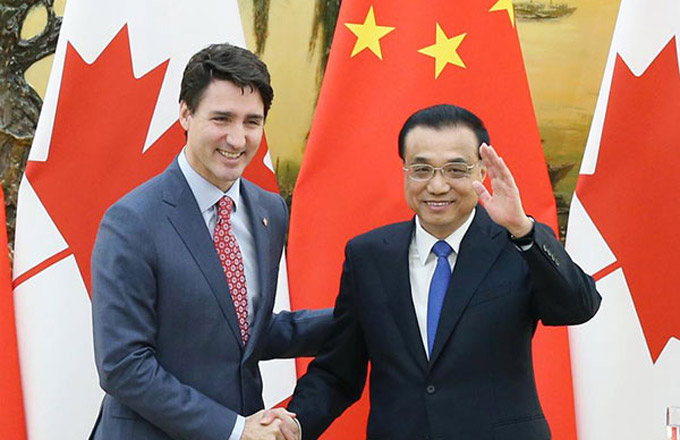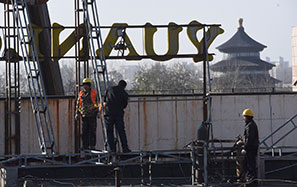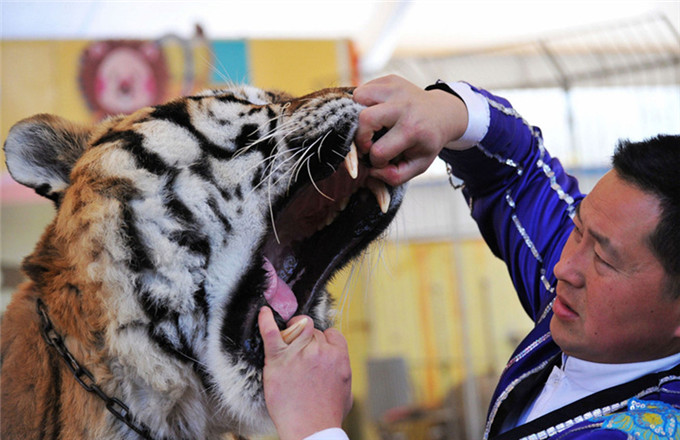Difficulties involved in reviving the 'rust belt'
Without key progress in restructuring state-owned enterprises, structural change and innovation will be difficult in the region
A recent policy document from China's State Council says "old industrial bases", meaning Northeast China, will make significant progress in key reform areas by 2020 and will be revived by 2030.
The document says the northeast's opening-up will become a new driving force for its revitalization.
Between 2003 and 2013, China launched its first campaign to revitalize the region. As a result, significant and historical changes were achieved in infrastructure construction and the development of heavy chemical industries, as reflected in its growing economic strength, better economic environment and a tangible rise in its economic aggregate.
However, the campaign has failed to achieve a breakthrough in structural adjustment and institutional innovation, and the region's structural and institutional contradictions and problems have been exposed once again vis-a-vis China's economic transformation and upgrading.
The new campaign to revitalize Northeast China should, therefore, focus on structural adjustment and institutional innovation, to transform the region into a base of advanced or upgraded manufacturing. For its revival, a modern perception of the service sector should be cultivated. The region could learn from the experiences of Germany, whose modernized service sector accounts for 70 percent of its GDP and production-related services account for 70 percent of its service sector.
Northeast China should also strive to realize the transformation and upgrading of its manufacturing sector in order to establish an industrial model in which its modern services, production-related services in particular, are the driver.
The low proportion of modern services in its industrial structure has seriously restricted the transformation and upgrading of manufacturing in Northeast China, which, in turn, has slowed its broader economic transformation. And without key progress being made in the restructuring of state-owned enterprises, the main force of the region's manufacturing sector, structural adjustment and institutional innovation will be difficult to achieve.
Another hurdle is the region's low degree of opening-up, both to foreign countries and market and industries. Last year, the three northeastern provinces - Liaoning, Jilin and Heilongjiang - accounted for 8.6 percent of China's total economic aggregate, but their imports and exports accounted for only 3.4 percent of the national total.
As far as market opening-up is concerned, the private sector accounts for more than 50 percent of the region's GDP, 10 percentage points lower than the national average of more than 60 percent. According to a list of China's top 500 private enterprises, compiled by the All-China Federation of Industry and Commerce, only nine are from the northeast, compared with 138 from Zhejiang province and 91 from Jiangsu province, both of which are in the east.
The northeast's industrial opening-up is also at a low level. In 2014, its state-owned assets accounted for 50 percent of the total assets held by industrial enterprises above a certain scale, while the national average was only about 10 percent.
To develop a new driving force for its rejuvenation, Northeast China should make full use of the China-Russia-Mongolia economic corridor, advance cooperation on infrastructure investment and set up a Northeast Asia free trade network to strengthen its production-related service trade and open up its service market.
Such a driving force is essential for an innovative mode of development. In the region, the government's "invisible hand" remains very strong. So what it should do next is to take practical measures to allow the market to play a bigger role in economic activities. Also, the region should cultivate the concept of inclusive development in society.
Despite the difficulties it faces, the region is still expected to become an important base of China's advanced manufacturing in the next five to 10 years if it can cash in on the opportunities offered by the country's intensified efforts for economic transformation and upgrading and opening-up.
The author is president of the China Institute for Reform and Development, based in Haikou, Hainan province. The views do not necessarily reflect those of China Daily.


















